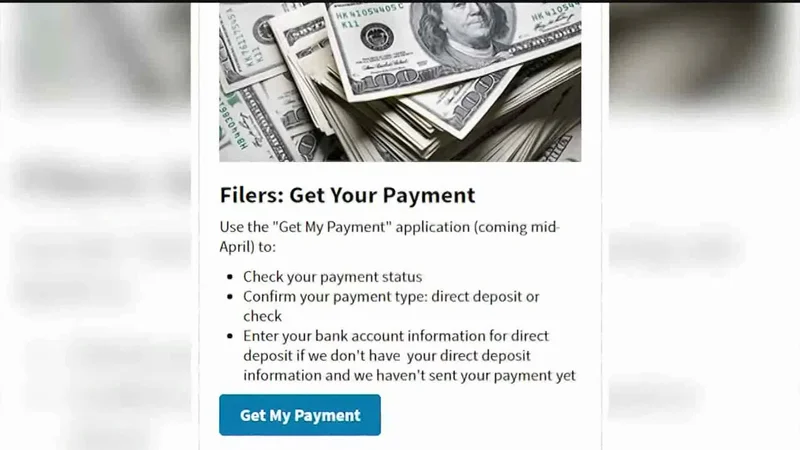Anatomy of a False Signal: Deconstructing the $2,t000 Stimulus Rumor
======================================================================
A signal has been propagating through the digital ecosystem. Over the past few weeks, chatter about a $2,000 direct deposit from the IRS, supposedly scheduled for this October, has achieved a remarkable level of saturation. You can almost see it in the data—a sudden spike in search volume, a cascade of shares across social platforms, the digital equivalent of a crowd forming on a street corner, drawn in by a rumor. The claims are specific, citing amounts from $1,390 to a neat $2,000, and often come with urgent, definitive timelines.
Let’s be clear from the outset: The signal is noise. Despite questions like "$2000 direct deposit from IRS this October? What to know about stimulus checks," there is no federally authorized stimulus check or direct deposit program for October 2025. Official denials from both the IRS and Congress are unambiguous.
The interesting question, then, isn’t whether the payment is real. It’s not. The interesting question is why this particular false narrative became so potent. False signals in any system, whether financial markets or public discourse, are worth analyzing. They reveal underlying pressures and systemic vulnerabilities. This rumor is not just a piece of misinformation; it’s a data point reflecting a powerful economic reality.
The Composite Illusion
This $2,000 rumor didn't materialize from nothing. It’s a composite, skillfully (or accidentally) assembled from fragments of truth, which gives it a veneer of plausibility. My analysis suggests it’s built on three distinct pillars.
First, there’s the pillar of historical precedent. Between 2020 and 2021, the U.S. government issued three rounds of Economic Impact Payments. These were real, tangible deposits: $1,200, then $600, and finally $1,400. These programs created a mental framework for the public; the mechanism for direct government payments now exists in the collective consciousness. The final deadline to claim the last of these payments just passed on April 15, 2025, bringing the topic back into the periphery of financial news cycles. The memory of money appearing in a bank account is a powerful one.

Second is the legislative ghost. A proposal known as the American Worker Rebate Act of 2025 does, in fact, exist. It was introduced by Missouri Senator Josh Hawley and aims to send payments to taxpaying families. The proposed amounts range from $600 to $2,400. However, its status is critical: it is a bill, not a law. It has not passed Congress and has no scheduled implementation. Online, this distinction is easily blurred. A proposal becomes an imminent reality, a legislative possibility twisted into a certainty.
The third pillar is a classic case of misinterpreting operational changes as fiscal policy. The IRS recently announced a genuine policy update: it plans to phase out most paper refund checks starting in late 2025, moving almost entirely to electronic direct deposits. (This is part of a broader, and frankly overdue, modernization effort at the agency.) Scammers and misinformed individuals have conflated this move toward "direct deposit" with a new "direct deposit stimulus." It’s a fundamental correlation-causation error, but an effective one for fueling speculation. Why else would the IRS be so focused on direct deposits right now, the logic goes, unless a massive payment was coming?
These three components—a real past, a possible future, and a misunderstood present—combine to create an incredibly sticky narrative. It’s the perfect blueprint for misinformation that feels like it could be true.
The Data of Desperation
When a signal, even a false one, gets this much amplification, it tells you something about the receivers. The viral posts on TikTok and X didn't just get views; they generated thousands of comments from people asking, "Is this true?" and "When will I get mine?" This isn't just online chatter; it's a massive, publicly sourced dataset of economic anxiety. The demand for this rumor to be true is overwhelming.
I've analyzed market rumors for years, and the propagation pattern here is classic. It combines a kernel of truth—the existence of past programs—with a specific, falsifiable deadline, like "deposits will arrive on October 15." This creates urgency and bypasses critical thought. It’s a structure designed to exploit hope.
The negative externality, of course, is the wave of phishing scams that follows. The IRS has been forced to issue repeated warnings—as detailed in reports like IRS Warns Americans After Fake 'October Stimulus Checks' Go Viral on Social Media—about fraudulent texts and emails promising "stimulus reactivation" or "instant deposit verification." These scams are the predators that follow the herd. They thrive in environments where clear information is scarce and financial desperation is high. They are drawn to the information arbitrage between a hopeful public and a silent government.
What does it say about the state of household balance sheets when a baseless social media post can trigger a nationwide wave of both hope and fraud? The intensity of the reaction is, in itself, the most important signal here. The rumor persists not because people are gullible, but because they are under immense financial pressure from inflation and stagnant wages. They are actively searching for a lifeline, making them receptive to any signal, however noisy, that promises one.
A Glaring Economic Indicator
Ultimately, the story here isn't about a non-existent stimulus check. That’s just the artifact. The real story is the clear and measurable desperation the rumor has exposed. The viral spread is a qualitative data point that should be as alarming to policymakers as any inflation report or unemployment figure. It signals that a significant portion of the population is financially fragile enough to latch onto the slimmest of hopes, broadcast from the most unreliable of sources. The noise isn't the problem; it's a symptom of the system's underlying condition.
